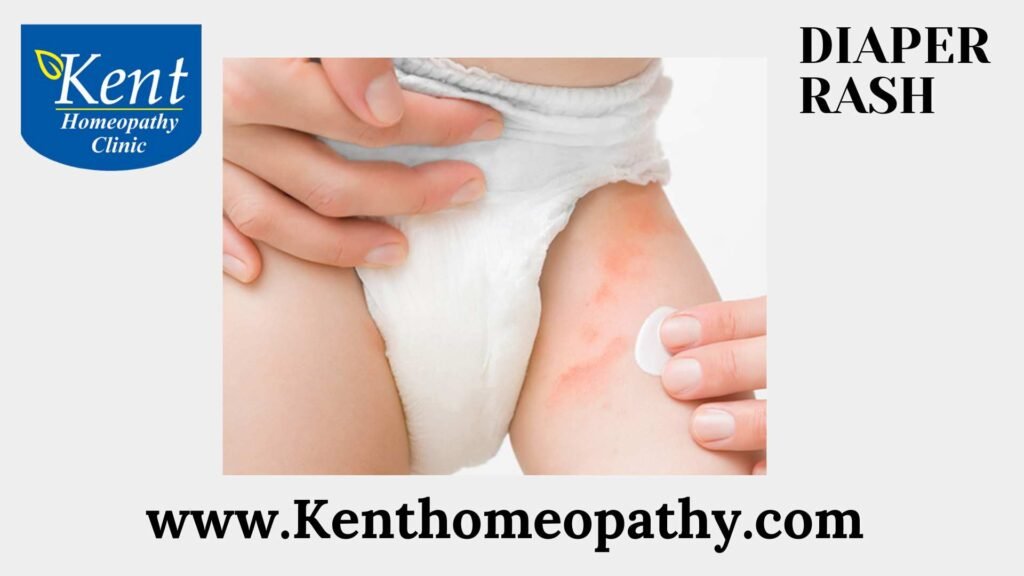Diaper Rash

Diaper rash is a common skin irritation that occurs in the diaper-covered area of infants and toddlers. It typically manifests as red, inflamed skin and can be uncomfortable for the child. Understanding the symptoms, causes, and types of diaper rash is essential for effective prevention and management.
Symptoms:
- Redness: The affected area appears red and irritated, often extending beyond the diaper area.
- Inflammation: Swelling and tenderness may accompany the redness.
- Warmth: The skin may feel warm to the touch.
- Papules or Pustules: Small, raised bumps (papules) or fluid-filled lesions (pustules) may develop.
- Peeling or Flaking: The affected skin may peel or flake, indicating skin damage.
- Discomfort: Infants with diaper rash may seem irritable or uncomfortable, especially during diaper changes.
Causes:
- Prolonged Exposure to Moisture: Wet diapers, whether from urine or stool, can soften the skin and make it more susceptible to irritation.
- Friction: Rubbing or chafing from the diaper against the skin can contribute to diaper rash.
- Infrequent Diaper Changes: Not changing diapers promptly allows moisture and irritants to remain in contact with the skin.
- New Foods or Medications: Introducing new foods or medications, especially for breastfed babies or those starting solid foods, can lead to changes in stool consistency, potentially causing diaper rash.
- Bacterial or Fungal Infections: Candida, a yeast-like fungus, can thrive in the warm, moist environment of a diaper and contribute to diaper rash.
- Sensitive Skin: Some babies have more sensitive skin, making them prone to diaper rash.
Types:
- Contact Dermatitis: This is the most common type of diaper rash and is caused by prolonged exposure to wetness, friction, or irritants in diapers.
- Yeast (Candida) Infection: Candida diaper rash is characterized by bright red skin, often with red or scaly borders. It may involve the folds and creases of the skin.
- Bacterial Infection: A bacterial infection can occur when the skin is compromised, leading to pustules, crusting, or oozing.
- Allergic Reaction: Some babies may develop an allergic reaction to certain diaper materials, wipes, or creams, resulting in a rash.
If diaper rash persists or worsens despite home care measures, or if there are signs of infection (such as oozing, pus, or fever), it’s important to consult with a healthcare professional for further evaluation and appropriate treatment. Diaper rash is a common concern, and with proper care and preventive measures, it can often be effectively managed.
Contact to know more
Contact
Powai: 52, Galleria Mall,
Central Avenue, Hiranandani Gardens,
Powai, Mumbai-400076
Mobile Number: 08291492566
Timings
Monday to Saturday:
11:00 AM to 02:30 PM
06:30 PM to 09:00 PM
